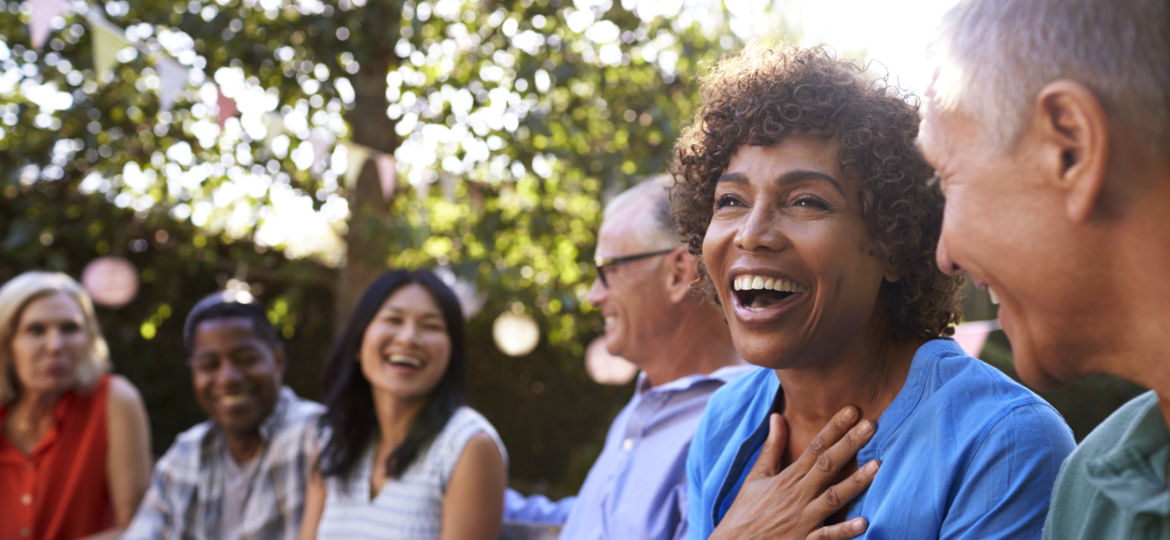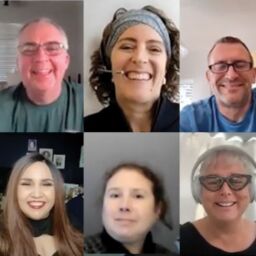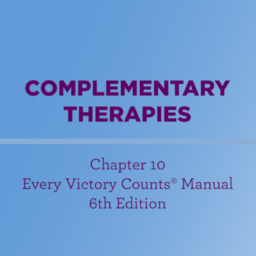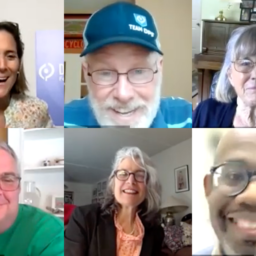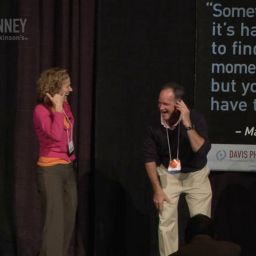Written by Brian Reedy, Davis Phinney Foundation Ambassador
Laughter yoga can be an especially powerful tool for living well.
Laughter yoga combines laughter with yogic breathing and stretching exercises. It works best in groups and requires eye contact and playfulness. Many of the exercises incorporate cognitive challenges within them, like clapping and laughing at the same time, so they are both are fun and challenging (and there are no worries if mistakes are made!).
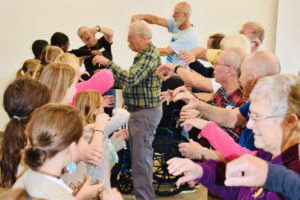
The most amazing aspect of laughter yoga is that it focuses completely on the positive. It’s designed to bring joy to your life. It can reduce physical, mental, and emotional stress and keep you connected to others.
LAUGHTER YOGA AND PARKINSON’S
Laughter yoga is a powerful way to address some of the non-motor aspects of Parkinson’s such as depression, apathy, and social isolation. I’ve seen this in person countless times. When leading participants who are experiencing depression, anxiety, or apathy, I often notice that they start off in their own little world. Yet, once they get comfortable, smiles begin to show as they watch the crazy, funny laughter yoga exercises. Sometimes, they end up quietly joining in, and you no longer see depression on their faces. Sometimes, you can almost see apathy melt away as someone begins to show more interest and excitement in the activities.

My observations support what research says about the psychological benefits of laughter yoga practice. Laughter yoga can:
- Enhance overall mood
- Encourage social interaction
- Reduces anxiety and depression
- Create a sense of childlike playfulness
- Reduce stress
- Create fun and purposeful moments
And that’s just the mental and emotional benefits. When laughter yoga is practiced regularly for about 30 minutes a session (most laughter yoga classes begin with a five-minute warm-up, followed by 10-15 minutes of “big laughter” exercises, followed by five minutes of cool-down exercises), it has been shown to:
- Strengthen the immune system
- Increase serotonin levels
- Release endorphins
- Increases blood flow
- Increase oxygen circulation
- Reduce the stress hormone cortisol
- Lower blood pressure
- Reduce inflammation and pain
- Stretch muscles
- Improve sleep

Laughter yoga inspires people to laugh heartedly in a community. The robust laughter that is integral to the practice helps participants feel better, enjoy life more, and keep the positives in the forefront of their lives. It helps reduce the negative aspects of Parkinson’s and positively supports a better outlook and improved quality of life.
Here’s another personal example that highlights these benefits. A couple of years ago, when the Davis Phinney Foundation, in partnership with Lundbeck, was running the the Sidekicks® program (partnering school-age youth with people with Parkinson’s who worked on art projects together), as a Sidekicks leader, I noticed that as participants entered the room, the youth gathered in a corner of the room while the people with Parkinson’s sat together at the tables. To mix it up, we decided to practice laughter yoga exercises together as a group, hoping people would mingle and get to see a bit of each other’s personalities. After about five minutes of the laughter yoga activity, we asked each person with Parkinson’s to pick their youth partner. This turned out amazingly well; having had the chance to see the silly side of each other and capture a snapshot of each other’s personalities, everyone was able to pick someone they felt they would be comfortable with. We kept doing laughter yoga exercises between each session, and the comfort level and the silliness increased each time.

THE ORIGINS AND Development OF LAUGHTER YOGA
In 1995, Dr. Madan Kateria in Mumbai, India, decided to research the adage “Laughter is the best medicine.” In a local park, he, his wife, and some friends began with joke telling, but found it was not working. He continued to research and he found a study that proved fake laughter is as beneficial to the brain as real laughter. In trying that, the group quickly realized that fake laughter soon turned to real laughter. The laughter was contagious.
As the laughter went on, however, the group’s participants found that the sustained activity made them tired. To help, Dr. Kataria incorporated a technique he was doing in his regular yoga practice – deep breathing (or pranayama). He knew that deep breathing would refresh the oxygen in the brain and body, creating more energy. He had the group begin their practice with two or three laughter exercises, followed by a deep breathing exercise. That rhythm worked well, and laughter yoga was born.

Now, there are more than 20,000 free laughter yoga clubs in 110 countries. Laughter yoga is used in schools and businesses. It’s practiced in dialysis centers, cancer hospitals, prisons, senior centers, and more. It is a common feature in schools for people who are deaf and mute, as well as at schools for people who are blind. Laughter yoga has no language barriers. The only known side effect is increased feelings of joy for longer periods of time.
Learn more about how laughter yoga can help you live well with Parkinson’s
Free Online Laughter Yoga Class, Sponsored by the UCSF Osher Center for Integrative Medicine
Laughter Yoga Shows Promise as Alternative Therapy in Depression
Stress relief from laughter? It’s no joke
I tried laughing yoga — and what I learned about myself surprised me
Find a Free Laughter Yoga Club Near You
While creating this blog, we learned about a new complementary therapy called professional cuddle therapy. You can learn more about it here.


